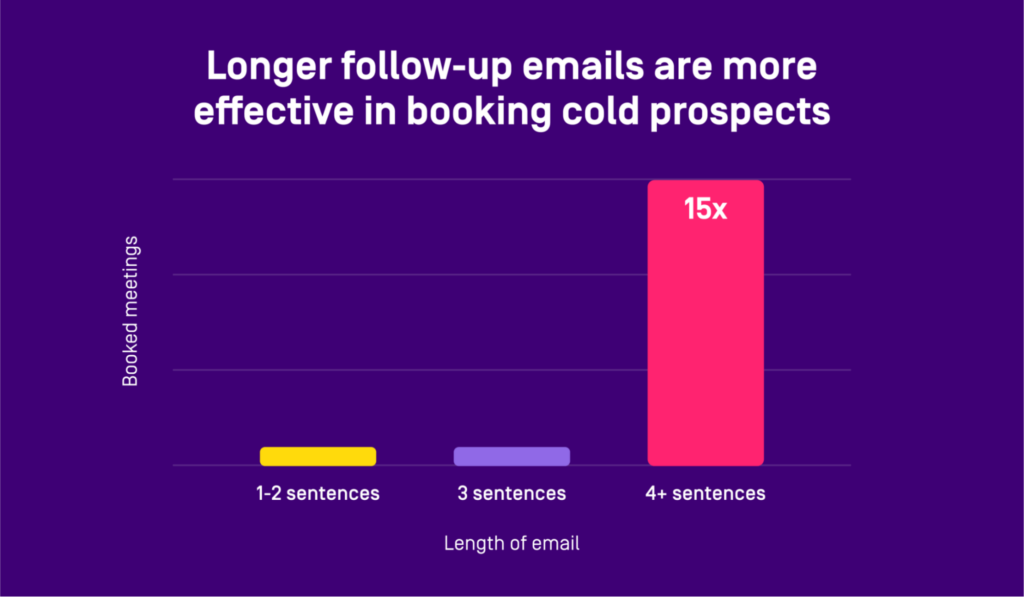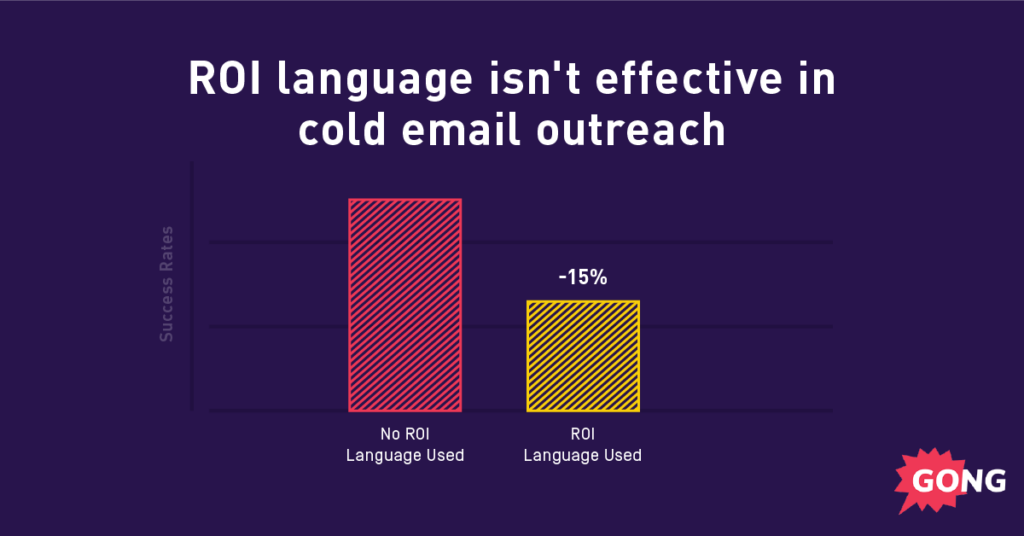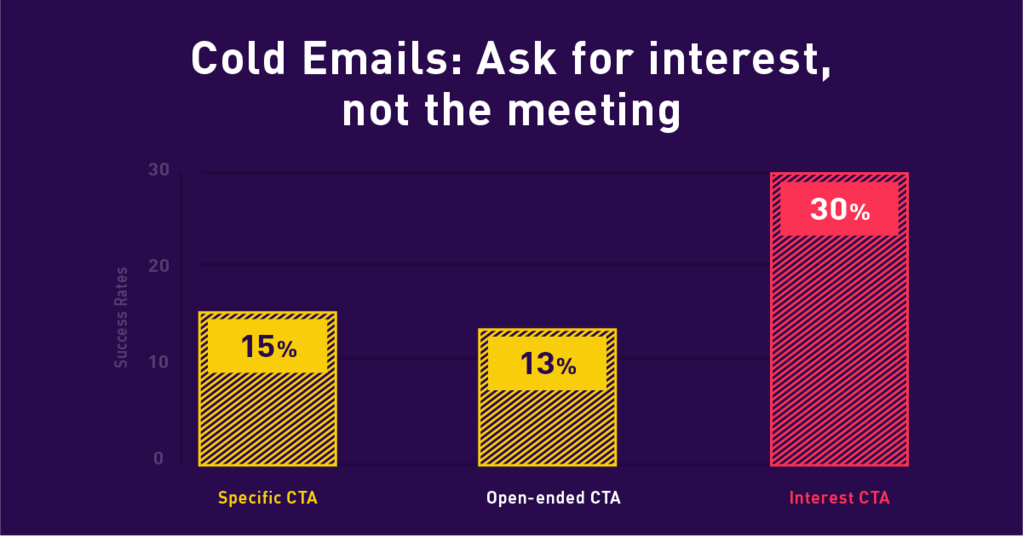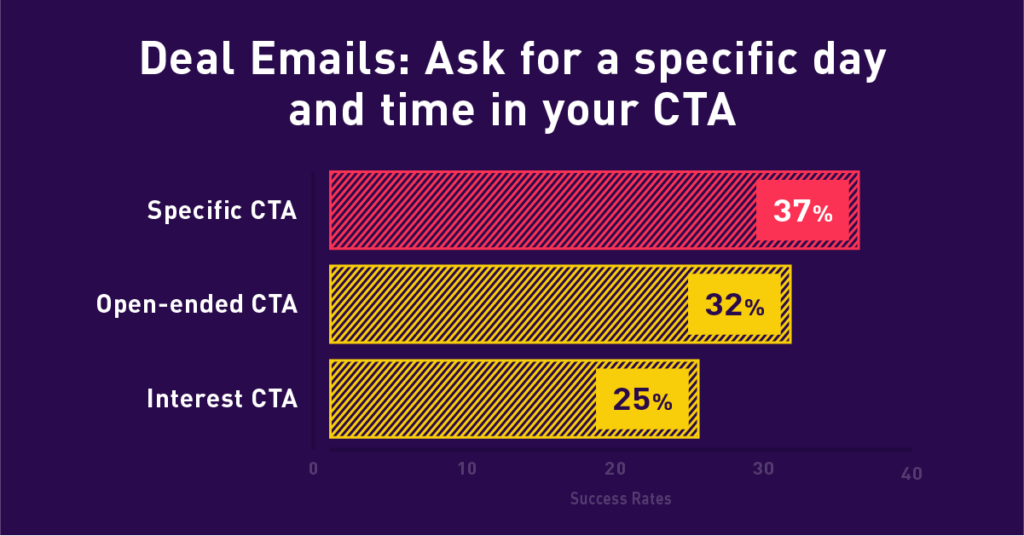Before You Hit Send: 7 Sales Email Statistics To Boost Your Email Game
Sales emails are easy.
You’ve done it your entire life. You’ve got this.
You craft that prospect email.
You hit send.
You wait.
And wait.
And wait.
3 days go by. Crickets. Silence. Nada. Nothing.
You send a follow-up email. THIS one will get them to open, click, and (maybe) even call you! Nope. Same result.
What is up? You are a pro emailer.
Apparently not.
It turns out you are just sending emails based on what works for you … not using data, not incorporating science, not leveraging all the work Gong has done to give you a better chance that your emails will get acted upon.
Here are 7 sales email statistics that will help you win more deals.
Wait. Did someone say DATA?
The story behind Gong data
Gong analyzes your customer-facing interactions across phone, email, and web conferencing to deliver your team the insights they need to close more deals.
These interactions come in the form of anonymized data our team (and AI) use to analyze how seller and buyer behavior impacts success rates.
We review millions of calls, emails, and other sales interactions for all of these sales stats.
In the Gong platform, it looks something like this:

So this article is not just our assumptions on what works best for sales emails. Nope. The following is reality-based data.
Let’s get right into it.
Sales Email Statistic #1: For cold emails, longer is better
For most of our sales life, we’ve been told that shorter is better when it comes to emails.
Generally speaking, this is true.
However, short and concise are not two sides of the same coin.
When it comes to cold email outreach, it turns out longer emails are significantly more effective in booking a meeting:

Wait. What?
Remember: Short is about length, maybe 30 words or less. Concise is more about length AND meaning.
In other words, you can craft a longer message that is still concise … as long as the email is compact, straightforward, and offers value to the reader. This email can be 150+ words. No problem.
The key: include information that connects the prospect or their company to your offer. Personalize your cold outreach emails. Make sure they are direct and intentional. Every sentence, every word, matters.
Sales Email Statistic #2: Do NOT talk ROI in a cold email
Everyone loves a good stat, a killer metric, an ROI number that proves their product’s worth. There is a time and place to discuss ROI … just not in that cold email outreach.
Before we go further: To gather this intel, we reviewed 132,000+ emails to understand how ROI* language impacted cold email success rates.
*ROI = the exact phrase “ROI” or any ROI-related statistics like multipliers (2x, 30x, etc.) and percentages (5%, 23%, etc.) in the salesperson’s email.
And I get it. It’s super-tempting to jump right into ROI, your safe place … your comfort zone.
Resist. The. Urge.
The data tells the story: Using ROI language in cold emails decreases success rates by 15%.

Promises about ROI don’t play in cold emails. So get rid of them now.
Here’s why: ROI in the first email becomes just a number. There is no context for it. It’s not connected to the prospect’s pain, their reality. Your buyers are left thinking, “So what? Why does it matter TO ME?”
Buyers make decisions based on emotions, then justify their decision with logic (using facts, like ROI).
Read more about ROI and cold emails here.
Sales Email Statistic #3: DO use the “Interest CTA” for cold emails
“Are you interested in learning more about X?”
That’s a classic “interest CTA” … one that should be used in cold emails -— instead of a “specific CTA” (“Are you available to meet on Tuesday at 4 PM PT?”) or an “open-ended CTA” (“Do you have time to connect sometime next week?”).
As the data prove, the Interest CTA is the highest performing call to action for cold emails by far.

Speaking of data, we reviewed 304,174 emails to arrive at this insight. We specifically looked at calls to action (CTAs) in these emails. A meeting booked within 10 days — a positive outcome -— counted, but “Please remove me from your email list” did not.
The interest CTA works for cold emails because you are selling the conversation, not the meeting.
Time is finite (24 hours in a day, 28-31 days per month, etc.), and most people wish they had more of it. Generally speaking, your buyer is reluctant to give their scarce time to you, a stranger!
Interest, on the other hand, is not finite. And it’s not a resource. Therefore, you are more likely to pique a buyer’s interest by asking for … their interest … instead of asking (demanding?) their time.
Sales Email Statistic #4: Move to the “Specific CTA” for deal emails
So we said to use the “interest CTA” in cold email outreach. Done.
However, the instant you enter the sales cycle, the Interest CTA loses some of its allure.
Next up: The Specific CTA — asking for a meeting with a specific day and time.

The good news is that this tactic more than doubles meetings booked, from 15% in the cold email stage to 37% in the deal stage.
It’s pretty logical if you take a second to think about it. Your buyers are already interested — they took the meeting, got past that first cold email. It’s time for a direct approach that gets straight to the point.
You are essentially removing friction and helping your buyer make faster decisions.
This is a hallmark of great sales copy:
It asks for the right action AND it makes it easy to say “yes.”
Need more examples?
Use these 5 sales email examples to start closing more deals from your inbox.
Sales Email Statistic #5: When sharing price, email is your friend
Sharing pricing over email may feel like the wrong approach, but this is why we look at data! BE GONE ASSUMPTIONS!
While analyzing the data, we uncovered that discussing price over email has a significant POSITIVE impact on win rates:

I know, we were surprised too.
Even more interesting, our data has shown that sharing pricing early in the sales cycle is best. Buyers need to know if it’s worth continuing the conversation. If your price is way out of their budget, it may be time to move on.
As long as you don’t utter the phrase “list price,” you are good to share pricing early, and via email.
Sales Email Statistic #6: But do not negotiate price via email!
BUT … once you share pricing (via email), do not use email to negotiate that shared pricing!

“Do you all do Net 60 for payment?”
“What about month-to-month agreements?”
“Do you have discounts for … ?”
These are all signs — trigger questions — that signal a pricing negotiation has started.
It’s time for you, the seller, to get proactive STAT. You need to be armed and ready with tactics to move the conversation to a place where you can win (think: phone call or video chat).
Once you begin negotiating price over email, you lose meaning (many one-way communications — like email — are ripe for misinterpretation) and you give the buyer the upper hand of TIME.
The solution: Toggle back and forth between email and phone.
- Email your price, then negotiate by phone
- Negotiate by phone, then send an email to confirm the price you discussed
The data show this to be the most effective approach:

Quite compelling, right?
Sales Email Statistic #7: Use email velocity to help forecast deals
One-way conversations are generally not good, especially in sales.
Emails with no responses.
Voicemails instead of conversations.
Meetings where the buyer doesn’t show up (eeks!).
While talking to yourself can elicit a decent reply, it’s far from ideal.
Instead, aim for a two-way conversation with your buyers. This is best accomplished by exchanging emails, lots of them.
Email velocity is the number of emails exchanged between buyers and sellers. More emails = more deals.

The key here is the word exchanged.: Email velocity is not measured by the number of emails you send to your prospect.
As you move deeper into the sales cycle, closer to a signature, you should notice this email per week number bump from ~8 emails to ~11.5. That’s how you get it done.
You have the data; now grab the templates.
Now that you know what works (and what doesn’t work), thanks to the above sales email statistics, it’s time to start crafting those emails and hitting send with confidence.
To help you along the way, our team has built these 11 irresistible, fill-in-the-blank sales email templates. These templates will take you through the entire sales cycle, from prospecting to negotiating to closing the deal (and everything in between).
Now go! Email away. You’ve got this.
